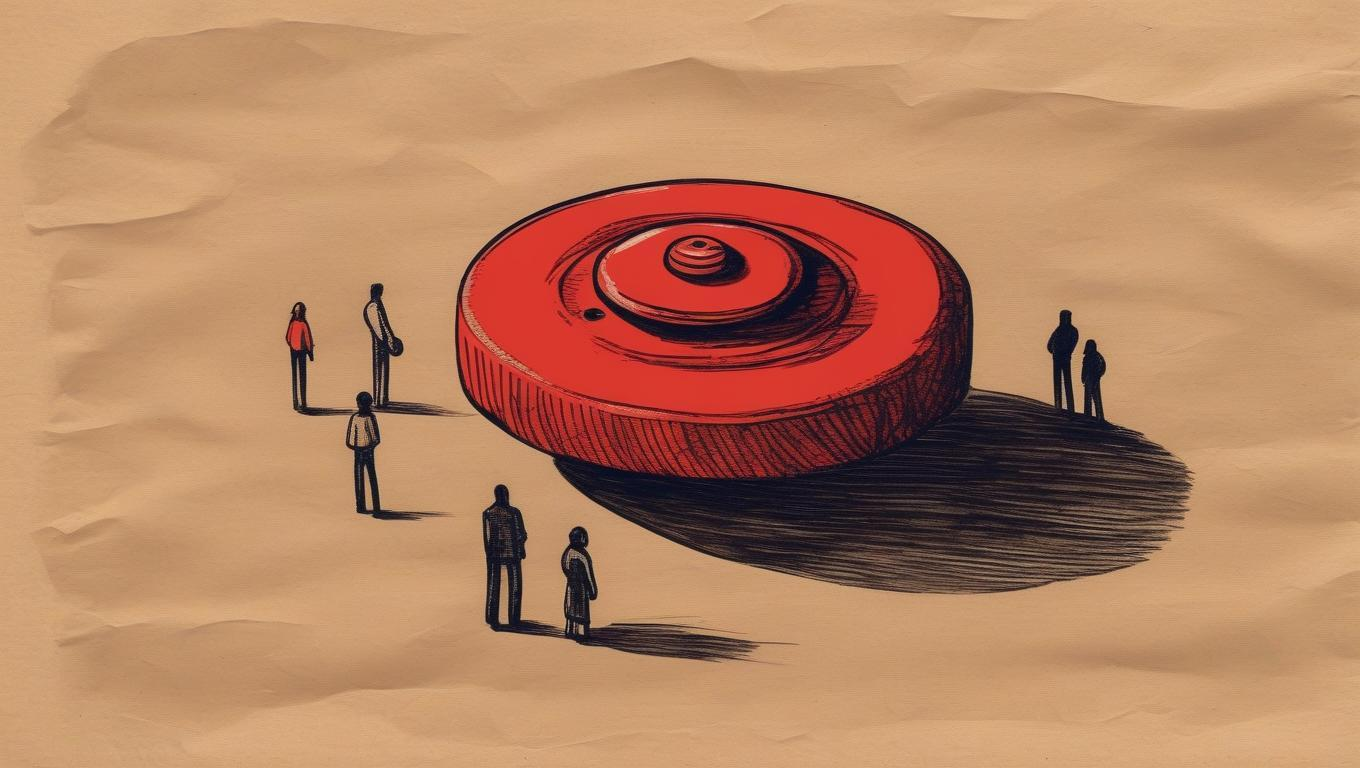Why Are We Compelled to Push the Button?

As someone who makes a living on creatively convincing folks to do "stuff", I'm always looking between the lines of other's tactics on engagements, design and technology. On a recent trip to the east coast, I ended up passing through La Guardia, an airport with so little space inside the terminals, it's amazing to me that restrooms, coffee shops and waiting areas can co-exist in the same footprint. Understanding my space and time between connections would be limited, I hoped to breeze through the whole experience as swiftly as possible ... until I saw the button. Come on Big Red Button, I was trying to have an uneventful day and you "bull in a china shopped" my whole layover -- selling a product I didn't use or need wrapped up in a piece of engagement technology I'd usually pitch to a client. You caused me to dwell on your purpose and strategy and got under my skin enough to force my hand into writing this article. You nihilist.
What am I ranting about? A simple yet effective experiential marketing technique that coerced me into interaction by hiding something from me and letting my "want" for the unknown drive my decisions. The Dollar Shave Club vending machine, you sly dog. This vending cabinet is a simple shopping kiosk that quickly gets you a product that you most likely need (or you wouldn't have approached) with no human interaction and as little hassle as possible. So why bother hiding your product behind a digital glass screen and force us to press a button to see what's inside? Because this is where your sales net can widen, this is where you get engagement from people who may not be desperate for a razor and, honestly, it's fun and on-brand.
Let's look at the process here:
-
We want what we can't have (or in this case, see) -- passing by the mammoth machine you have an inkling, but no solid proof of what's inside. So why not put a tiny little bit of commitment (push a button) and time (the seconds it takes to push said button) into fulfilling a basic thirst for knowledge (what's in the box). This is clever and effective but also kitschy -- and right on brand. Dollar Shave Club has made an existence of being brash and tacky in the usually cool and professional world of shaving devices-- so yeah, a big dumb button works.
-
So you press the button and freaking magic happens. Yep, literally magic to 99% of people. The glass was opaque grey, can't see inside, facts are facts. Then BOOM -- shaving stuff in tidy rows as far as the eye can see. You've now turn mere seconds of commitment (pushing that button) into 10's of seconds (perusing the products) and the exact engagement this box was designed for is happening.
-
Here is where it gets interesting -- If the vending machine was just a vending machine, you'd breeze by it unless you really needed a razor (let's say <1% of travelers). For example, you don't stop at a water fountain just to look at it, you stop at one when you're thirsty and you make a commitment to go put water in your mouth. But by teasing commitment and making you engage to see what you can't have, those 10's of seconds of commitment are engineered to expand the percentage of people who may buy the product. If I hid the water fountain behind a curtain and said "drinks: pull curtain aside" you would be inherently curious even if you're not desperately seeking hydration. You open the curtain, see a water fountain (could have been soda, booze, bucket of slushy, etc.) but it's a water fountain and you shrug and take a sip -- you've already pulled back the curtain, so what the heck? You grab a drink. Bottom line: you already shown commitment for 10s of seconds when you have no need for a razor but seeing them and being there equals a better chance you may purchase something.
-
Bonus: It's neat -- airports are boring and awful for most travelers. This is amusing and something to do, even if just for a few minutes. So what we have here is a micro (even sub-micro) experience that puts you in the driver's seat of your shopping experience while simultaneously entertaining and selling a commodity, like a razor, with next to no effort -- sounds lofty in its description? It is--BUT it's true. In experiential engagements, every little detail and every second matters. This is a true "hook, line and sinker" approach:
- HOOK - Big red button that says PUSH.
- LINE - Magic glass that reveals carefully curated products in a well lit and clean retail display.
-
SINKER - Self sale and selection, you're in control -- it's just a vending machine
I may not have actually bought a razor that day, but I sure thought about it. And then I wrote about it. Because I'm still thinking about that Big Red Button.


